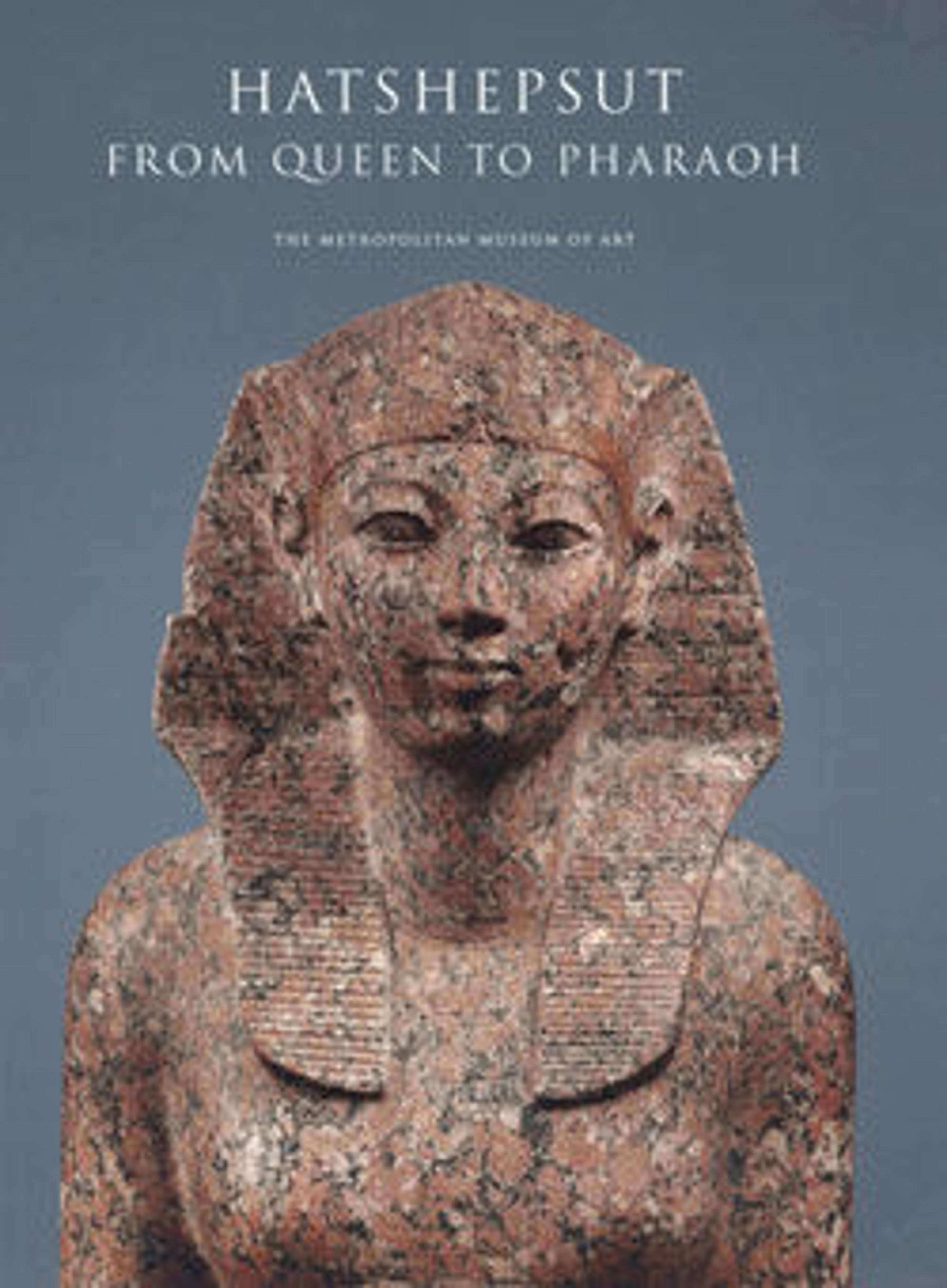Canopic Jar of Manuwai
At some time during his reign, Thutmose III acquired three wives from the area of modern Syria, probably for political reasons. These women were sent to Egypt and were absorbed into the royal court. They seem to have died at about the same time, and all three were buried in the same cliff tomb deep in the wadis southwest of the Valley of the Kings in the Theban necropolis (on the west bank of the Nile, opposite modern Luxor).
With few exceptions–notably, a glass vessel that one of the women may have brought as part of her dowery (26.7.1175)–the objects associated with their burials are typically Egyptian. Only the women's names, which were translated phonetically into the Egyptian language, identify their non-Egyptian origins.
Each of the wives was buried with a complete set of four canopic jars, which were used to store the four internal organs removed during mummification. This jar is inscribed for Manuwai. The lid, in the shape of a human head, is beautifully carved. The eyes were highlighted with black paint of which only traces remain. The inscription, which invokes the goddess Neit and the minor god Imseti, retains traces of blue paint.
With few exceptions–notably, a glass vessel that one of the women may have brought as part of her dowery (26.7.1175)–the objects associated with their burials are typically Egyptian. Only the women's names, which were translated phonetically into the Egyptian language, identify their non-Egyptian origins.
Each of the wives was buried with a complete set of four canopic jars, which were used to store the four internal organs removed during mummification. This jar is inscribed for Manuwai. The lid, in the shape of a human head, is beautifully carved. The eyes were highlighted with black paint of which only traces remain. The inscription, which invokes the goddess Neit and the minor god Imseti, retains traces of blue paint.
Artwork Details
- Title:Canopic Jar of Manuwai
- Period:New Kingdom
- Dynasty:Dynasty 18
- Reign:reign of Thutmose III
- Date:ca. 1479–1425 B.C.
- Geography:From Egypt, Upper Egypt, Thebes, Wadi Gabbanat el-Qurud, Wadi D, Tomb of the Three Foreign Wives of Thutmose III
- Medium:Limestone, blue paste
- Dimensions:Overall height 36.2 cm (4 1/4 in.); Jar: H. 25.5 cm (10 1/16 in.); Diam. wo cm (7 7/8 in.); Lid: h. 13 cm (5 1/8 in.); d. 12.4 cm (4 7/8 in.)
- Credit Line:Rogers Fund, 1917
- Object Number:18.8.12a, b
- Curatorial Department: Egyptian Art
More Artwork
Research Resources
The Met provides unparalleled resources for research and welcomes an international community of students and scholars. The Met's Open Access API is where creators and researchers can connect to the The Met collection. Open Access data and public domain images are available for unrestricted commercial and noncommercial use without permission or fee.
To request images under copyright and other restrictions, please use this Image Request form.
Feedback
We continue to research and examine historical and cultural context for objects in The Met collection. If you have comments or questions about this object record, please contact us using the form below. The Museum looks forward to receiving your comments.
